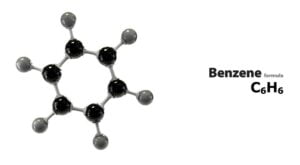HealthSCREEN UK
Benzene Monitoring
Benzene is a volatile organic compound that can evaporate quickly into the air and is known for its sweet-smelling odour. It is a colourless or light-yellow liquid that is highly flammable. Employees can be exposed to benzene through contact and inhalation. Monitoring benzene levels in the workplace is essential to ensure the health and safety of workers.
How We Support You
Our benzene monitoring process involves collecting urine samples from employees and analysing them in specialised laboratories to determine the extent of benzene absorption.
Urine sampling is a reliable method to assess internal exposure to benzene. By measuring the metabolites of benzene in the urine, we accurately quantify the absorbed levels. Our experienced team ensures a safe and confidential process, providing clear instructions to employees.
The urine samples are sent to state-of-the-art laboratories with stringent quality control measures. We provide detailed reports interpreting the results, highlighting elevated benzene metabolite levels, and recommending control measures to reduce exposure and comply with regulations.
We work closely with you to interpret the results and implement effective strategies such as engineering controls, improved ventilation, and employee training. Our goal is to create a safe workplace, protect employee health, and ensure regulatory compliance.
Main Benefits
Our benzene monitoring service provides several benefits, including:
- Ensuring the health and safety of employees exposed to benzene.
- Identifying high-risk areas with elevated benzene concentrations.
- Implementing control measures to reduce exposure.
- Complying with regulations and standards regarding benzene exposure.
- Preventing long-term health effects associated with benzene exposure.
- Early detection of potential hazards and timely intervention.

Ensuring Regulatory Compliance
Compliance with regulations is critical to safeguarding the health and well-being of employees and maintaining a safe working environment. Benzene is a hazardous substance, and its exposure is subject to various regulations and guidelines, such as the Control of Substances Hazardous to Health (COSHH) Regulations 2002. By utilising our Benzene Monitoring service, organisations can ensure compliance with these regulations and fulfil their legal obligations.
FAQ:
Inhaling high doses of benzene can lead to difficulty in thinking, changes in heart function, unconsciousness, or even death. Prolonged exposure to smaller amounts can decrease blood cell formation, and benzene is considered a cancer-causing chemical.
Symptoms of benzene exposure include drowsiness, dizziness, rapid or irregular heartbeat, headaches, tremors, confusion, unconsciousness, and, in extreme cases, death. Direct exposure to the eyes, skin, or lungs can cause tissue injury and irritation.
Benzene monitoring is crucial to assess the levels of benzene in the workplace, identify potential hazards, and implement control measures to protect the health and safety of employees.
If you are concerned about benzene exposure in your workplace or need benzene monitoring services, please contact us. Our experienced team can provide comprehensive monitoring solutions tailored to your specific needs. Ensure the well-being of your employees and maintain a safe working environment by taking proactive steps to monitor and manage benzene exposure.

Benzene Screening – Why It’s So Crucial
Among Healthscreen UK’s extensive range of services is that of Benzene monitoring. So, what exactly is this strange substance and why should you look out

RIDDOR Regulations
What are the RIDDOR Regulations? RIDDOR stands for the Reporting of Injuries, Diseases and Dangerous Occurrences Regulations and its latest update was in 2013. It’s

What is Biological Monitoring in Industry?
Learn about what Biological Monitoring can offer your company through this handy article:

